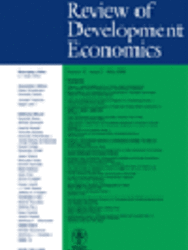Journal Special Issue
Poverty and Inequality in China
Getting an accurate picture of poverty and inequality trends and patterns in the world's most populous country is central to understanding changes in global inequality and poverty - these alter significantly when China is included or excluded. China's future performance is obviously central to the achievement of the MDGs at a global level as well and, given the country's rapid integration into the global economy, an accurate assessment of China's poverty and inequality is important to the wider debate on globalization's effects (see also the project on 'The Impact of Globalization on the World's Poor'. Within China, inequality and poverty are now amongst the most important social and economic issues. The historic campaign of 'western development', recently launched by the Chinese government, highlights the urgency and significance of analyzing these issues. Absolute poverty has fallen significantly in the last twenty-five years, and human development indicators have improved substantially. But income inequality has risen, in part reflecting the fast, but uneven nature, of economic growth which has favoured some sectors and regions more than others, and which has raised the returns to skills. Most pronounced is the regional variation in incomes, as well as non-monetary measures of human-wellbeing such as health and education status. The gap between the coastal regions (which have strongly benefited from the expansion in China's exports) and the interior regions has increased considerably, as has the urban-rural gap. Regional disparities in China reflect differences in endowments of natural resources across regions, locational factors (eg proximity to major transport links such as coastal ports), historical differences in the pace of economic development, the uneven impact of economic reform, and unevenness in the provision of economic and social infrastructure. Moreover, welfare indicators show different amounts of variation across regions (as between income measures and human development measures for example). National indicators of welfare therefore give a very incomplete picture of China's progress over the last twenty-five years.
 Join the network
Join the network